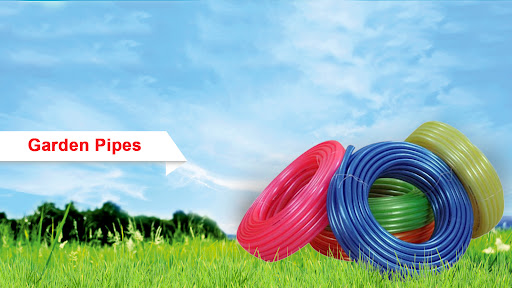A garden hose, often known as a hosepipe or simply a hose, is a flexible tube used to transport water. Sprayers and sprinklers are two frequent attachments at the end of the hose. In addition, hoses are often connected to a spigot or tap.
Extruded synthetic rubber or soft plastic garden hoses are commonly strengthened with an interior web of fibres. Garden hoses are flexible due to these materials, and their smooth exterior makes it easier to draw them past trees, posts, and other obstructions. Garden hoses are also durable enough to withstand scratching against rocks and being trodden on without being damaged or leaking.
Let us know which are the 5 key factors that determine which hose pipe is best for your garden:
● Intended use of the hosepipe: The first step before buying a garden hose pipe is to get a clear understanding of its intended purpose. Decide if you want to utilise it in your house for gardening or construction? It might be one of the two or a combination of the two options. A good hose pipe can be used for both purposes. The primary reason for being clear about the planned use is that it will help you select the appropriate garden hose size and quality. Furthermore, choosing the proper garden hose is essential if you want to utilise attachments with your garden hose.
● Size of the hosepipe: Consumers usually make a mistake in the size aspect. If you are buying for your house or garden, the half-inch size is usually what you need. A larger size is preferred if your garden has a more significant water outflow. Larger sizes obviously hold greater water volume for higher water production. They have greater mass to them at the same time.
If you use a little hose on a larger water source, it puts too much strain on the garden hose, which causes it to explode. As a result, knowing the proper size of your garden hose is crucial. It guarantees a pleasant gardening experience and good value for money.
● Quality of the hosepipe: It’s difficult to determine the actual quality of a garden hose. For the average person, virgin plastic and recycled plastic are nearly identical. They also, rather plainly, have the same appearance. The distinction is hidden under the surface. In a nutshell, the garden hose’s quality is determined by the following factors:
1. Garden hose weight – An underweight garden hose is prone to kinks and curls. They should be avoided.
2. Proper Garden Hose Inner Diameter – If the inner diameter of a garden hose is too small or too broad, using it with taps and accessories becomes a hassle.
3. The raw materials utilised – The materials used in the garden hose significantly impact its lifespan. Even the finest preventative maintenance would not preserve a garden hose that is not built to last.
4. Garden hose transparency/opacity – Using an opaque garden hose will help reduce algae growth. However, filler and low-quality raw material applications are more familiar with an opaque garden hose. Thus, choose a hosepipe wisely.
5. Garden hose softness/hardness – Oiliness in the summer and breaking in the winter are natural results of a garden hose that is not strong enough. Therefore, it is essential to select a hosepipe that suits your needs.
● Material of the hosepipe: These days, most garden pipes are made of PVC plastic. Garden hoses were initially made from natural rubber, making them expensive, cumbersome to manufacture, difficult to repair and move around.
Rubber hoses became obsolete with lightweight, inexpensive, and colourful PVC hose pipes. Rubber hoses were quickly replaced by PVC garden pipes. Although there are a few rubber garden hose producers nowadays, it is only used in particular places due to its high cost. As a result, PVC garden hoses are the most remarkable overall alternative and offer the most value for money.
● Price of the hosepipe: After you have double-checked the material, size and quality of the hosepipe, it’s time to haggle over the price. Negotiating over the price should be the last thing to do.


